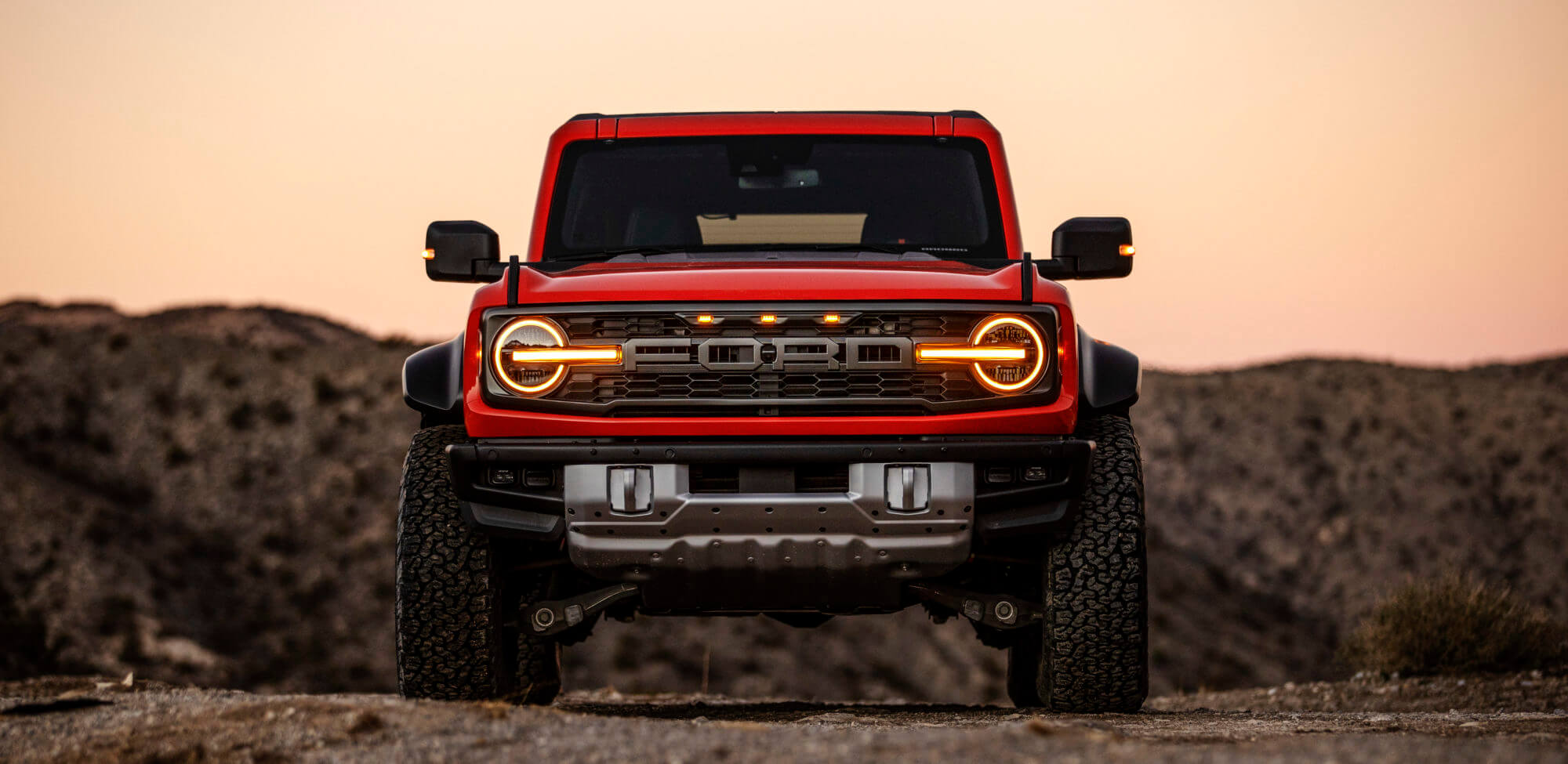
Photography courtesy of the manufacturer
Ford created an entirely new market segment in 2010 when they released the Raptor pickup. A wider track with fenders to match and the first internal bypass shocks ever offered on a production truck were just a few of the features that set the Raptor apart from previous “off road packages” that consisted of some stickers and a limited slip differential. Despite no competitors, Ford improved the Raptor over the years with more horsepower, even larger shocks, and locking differentials both front and rear. Now they have taken that same package and applied it to the Bronco platform. Like the original F-150 Raptor, the new Bronco Raptor has no rival in the market.
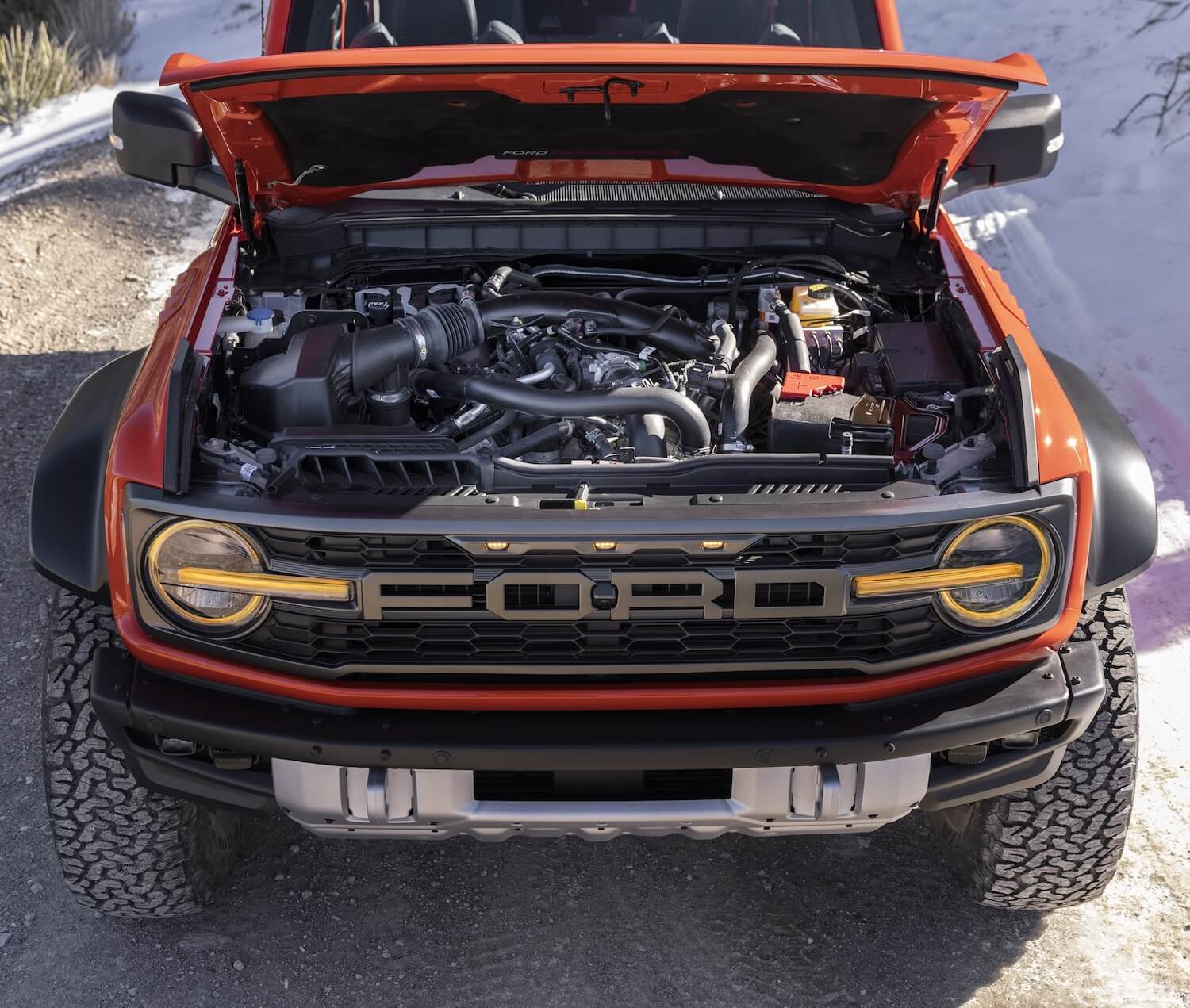
The Bronco Raptor comes with a 3.0L EcoBoost engine based on the powerplant in the Explorer ST. It is direct injected and uses it with turbos to make over 400-horsepower. Exact horsepower and torque figures have yet to be finalized, but it is more than any of the other offerings in the Bronco lineup.
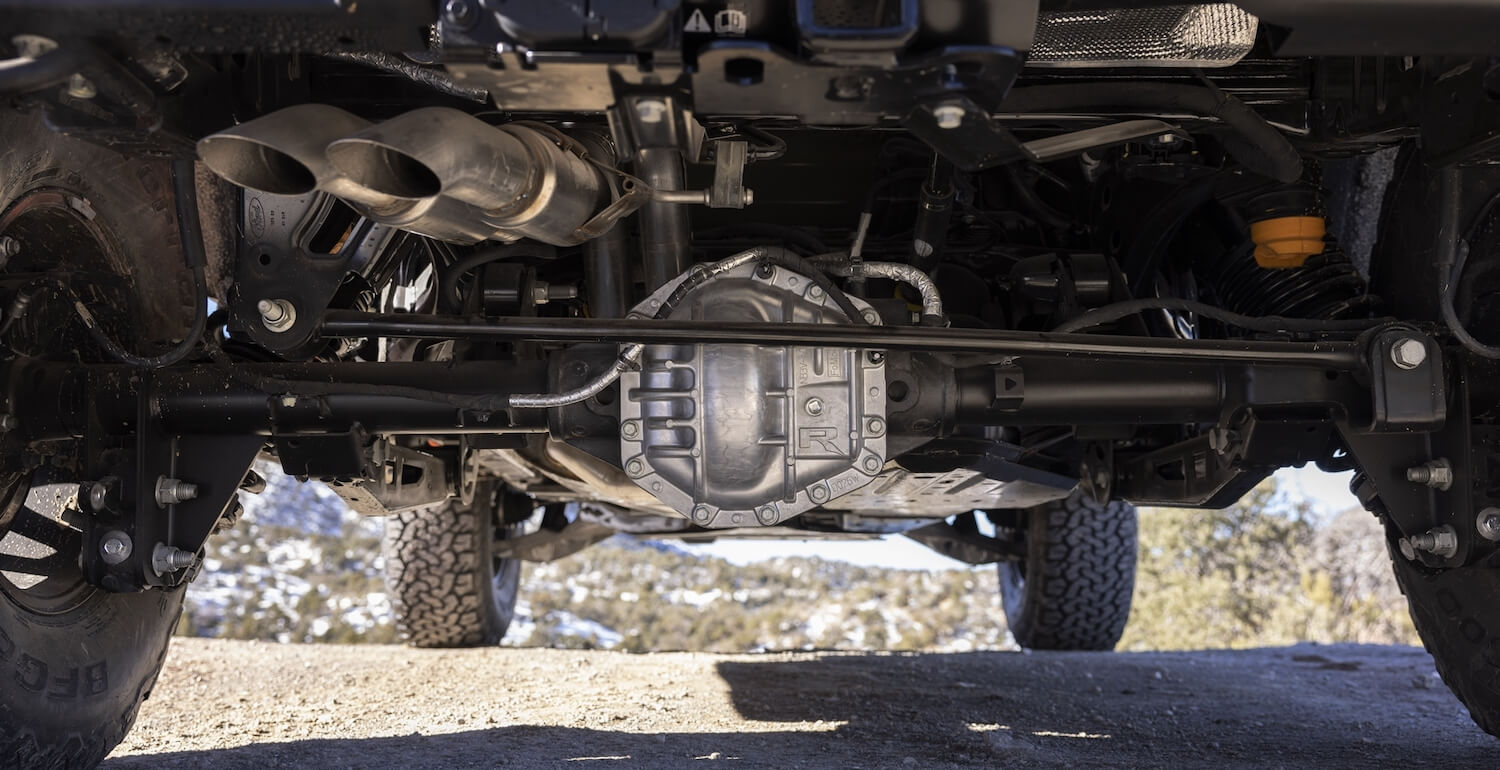
The axles still use selectable lockers and a 4.70 gear ratio, but they have been scaled up to handle the extra power. The front axle was upgraded from a 190mm diameter ring gear to an AdvanTEK Dana 44 ring gear with a 210mm diameter. In the rear, a Dana 50 with a 235mm ring gear replaces the normal Dana 44 with a 210mm diameter.
Powertrain
The Bronco Raptor is powered by a 3.0L twin turbo Ecoboost V6 making over 400 horsepower. This is far more than the standard 2.3L four-cylinder engine’s 300 horsepower and even greater than the optional 2.7L V6 Ecoboost’s 330 horsepower. The Bronco Raptor still uses the same 10-speed SelectShift automatic found across Ford’s product line; the sevens-speed manual transmission offered behind the four-cylinder engine is not an option on the Raptor trim. The transfer case is the same as the others in the Bronco lineup as well, and although the Bronco Raptor is designed to go fast we anticipate that it will be a capable crawler as well with the 3.06:1 low range ratio in the transfer case that combined with the 4.70 gears in the axles produces a crawl ratio of 67.8:1. A new Baja drive mode joins the Bronco’s stable of GOAT (Goes Over All Terrain) settings. This mode has an anti-lag system that lets exhaust flow when you’re off the throttle to keep the turbos spinning, so that there’s boost when you reapply the gas pedal.
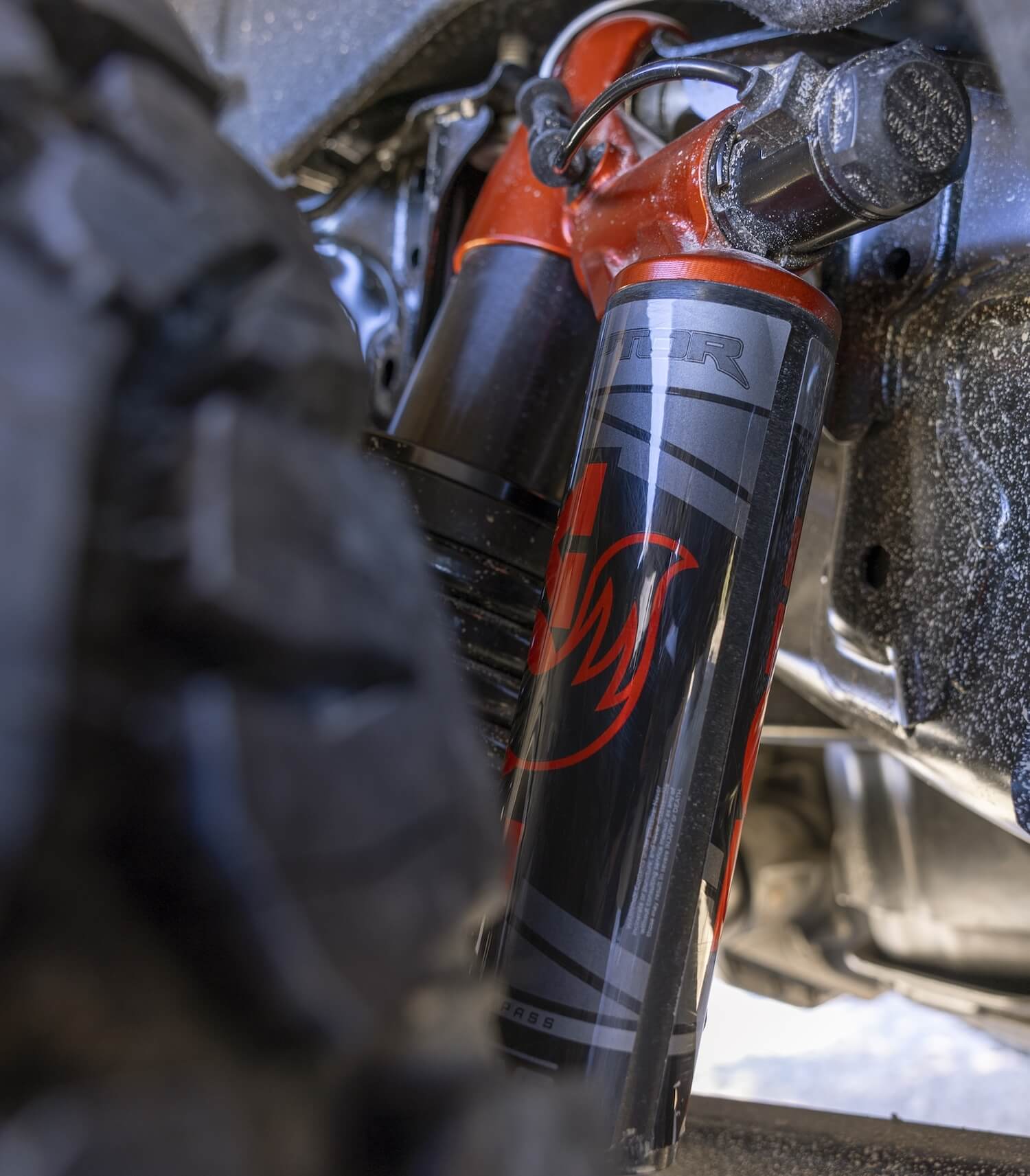
For more info on how shocks work visit: https://www.4wheelparts.com/the-dirt/what-to-look-for-in-a-shock/
Suspension
The Bronco Raptor benefits from a 60% increase in front wheel travel and a 40% increase in rear wheel travel, which pencils out to 13-inches in the front and 14-inches in the rear. This is accomplished through a track width that is 8.6-inches wider, along with HOSS (High-performance Off-road Stability Suspension) suspension that includes long travel Fox shocks. The front uses a coilover strut, just like the Raptor, Ranger, and normal Broncos. Unlike the Raptor and Ranger though, the Broncos (including the Raptor trim) use links and coils in the back to provide linear performance and eliminate axle wrap.
The 3.1-inch diameter Fox Racing shocks are the same setup as the F-150 Raptor’s, with external reservoirs in the rear but Bronco-specific valving. The brakes, wheels, and tires will even bolt right up to the F-150, though the wheel offset is different. The Bronco Raptor’s frame has also been revamped with beefier shock towers, a B pillar cross brace, and C pillar reinforcement to handle the abuse of desert racing and prerunning. Those upgrades mean a 50-percent increase in torsional rigidity versus the standard Bronco.
The Fox shocks are the real star of the show here though and responsible for the speeds that the Bronco Raptor is capable of through the desert. In addition to being position sensitive with internal bypass capabilities the shocks also have Fox’s semi-active Live Valve. This technology was first introduced on the F-150 Raptor with electronically controlled compression damping. Suspension height sensors and other sensors at each corner monitor terrain conditions independently hundreds of times every second and adjust suspension tuning accordingly. By using vehicle sensors and accelerometers, Live Valve can instantly adapt to inertial, steering, braking, and acceleration inputs to actively maximize handling, comfort, and bottom-out resistance.

The Bronco Raptor comes from the factory with 37-inch tall BFGoodrich All-Terrain KO2 tires on beadlock-compatible rims. That is bigger than the tires on the Jeep Wrangler Recon and Ram TRX. The big tires increase ground clearance by 4.8-inches over a base Bronco, from 8.3-inches to 13.1-inches.
Other Goodies
There are plenty of other Raptor-specific goodies to be found on the Bronco Raptor as well, most notably the 37-inch BFGoodrich All-Terrain KO2s on beadlock-capable wheels. Perhaps most surprising for a desert-themed package, towing capacity is increased by 1,000 pounds to 4,500 pounds. We attribute that to the larger axles and increased horsepower. The Raptor treatment also includes a unique hood, Rigid Industries auxiliary lighting, amber daytime running lights, and a heavy-duty modular steel front bumper with tow hooks and removable end caps.
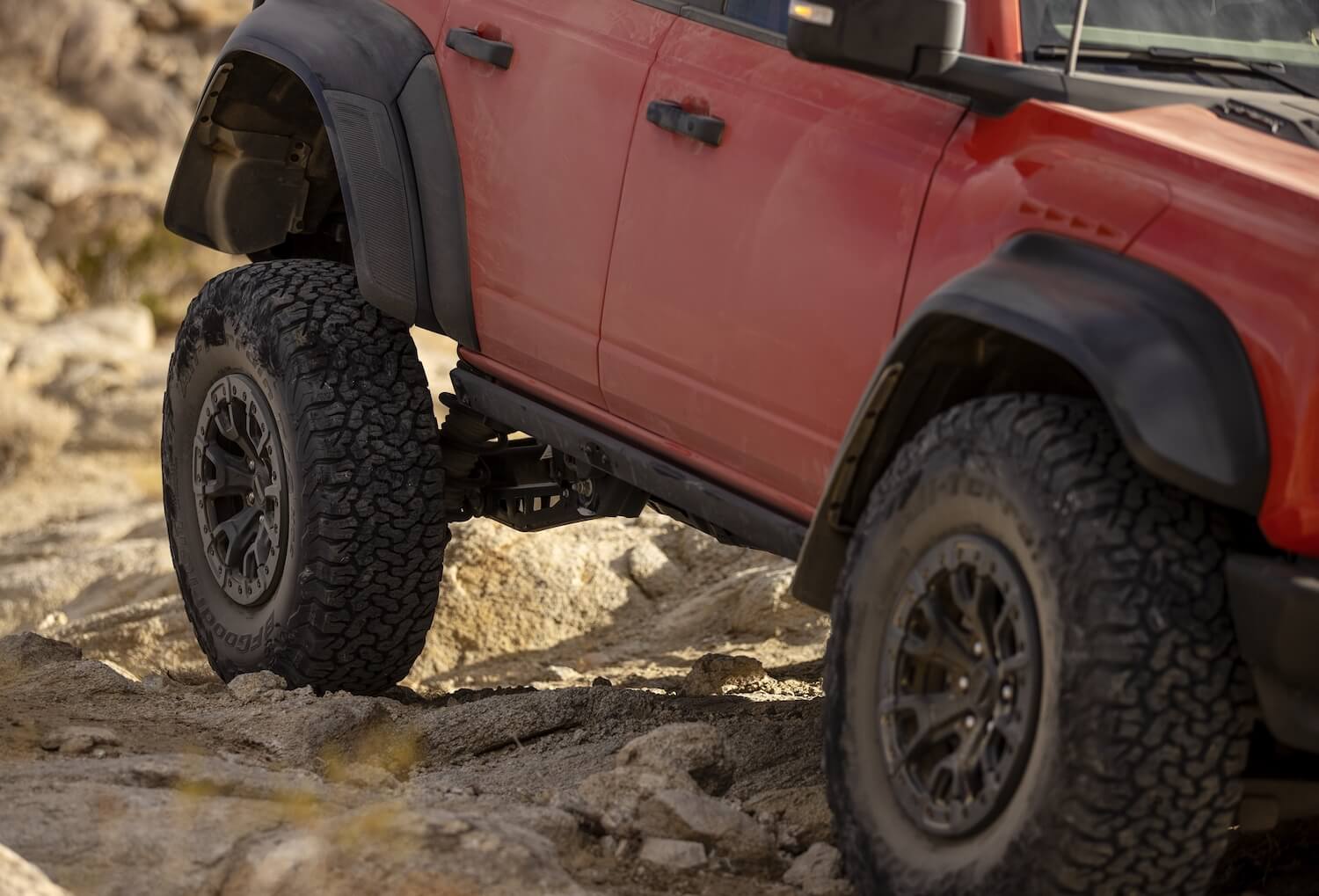
Using a narrow frame with longer a-arms to increase wheel travel is a trick straight out of the Trophy Truck playbook. Ford added an additional 9.8-inches to the Bronco Raptor track width over the normal Bronco, making it 86.9 inches wide overall. That width required the flares to match in order to stay DOT legal and keep from spraying mud and debris all over the vehicles behind you.
Complaints
As great as the new Bronco Raptor is on paper, the reception from the public hasn’t been entirely positive. The biggest complaint we have heard is in regards to the wider fender flares to cover the 8.6-inch wider track width. We agree that they look like an afterthought, particularly when compared to the F-150 Raptor’s beautiful bodywork that has been stretched to tuck the tires in the fenders. The rear two-piece flare around the back door in particular looks, how do we say… “pre-production”. We anticipate that many Bronco Raptor owners will simply replace the fenders with a product like 4WP’s Fender Delete Kit. The other big complaint we have heard is the price tag, which starts at $68,000. Certainly, the Bronco Raptor is not for everyone, but considering there is really nothing else like this on the market Ford can charge whatever they want. And given the features that come on the Bronco Raptor, the price is inline with what we would expect (and actually less than an F-150 Raptor).
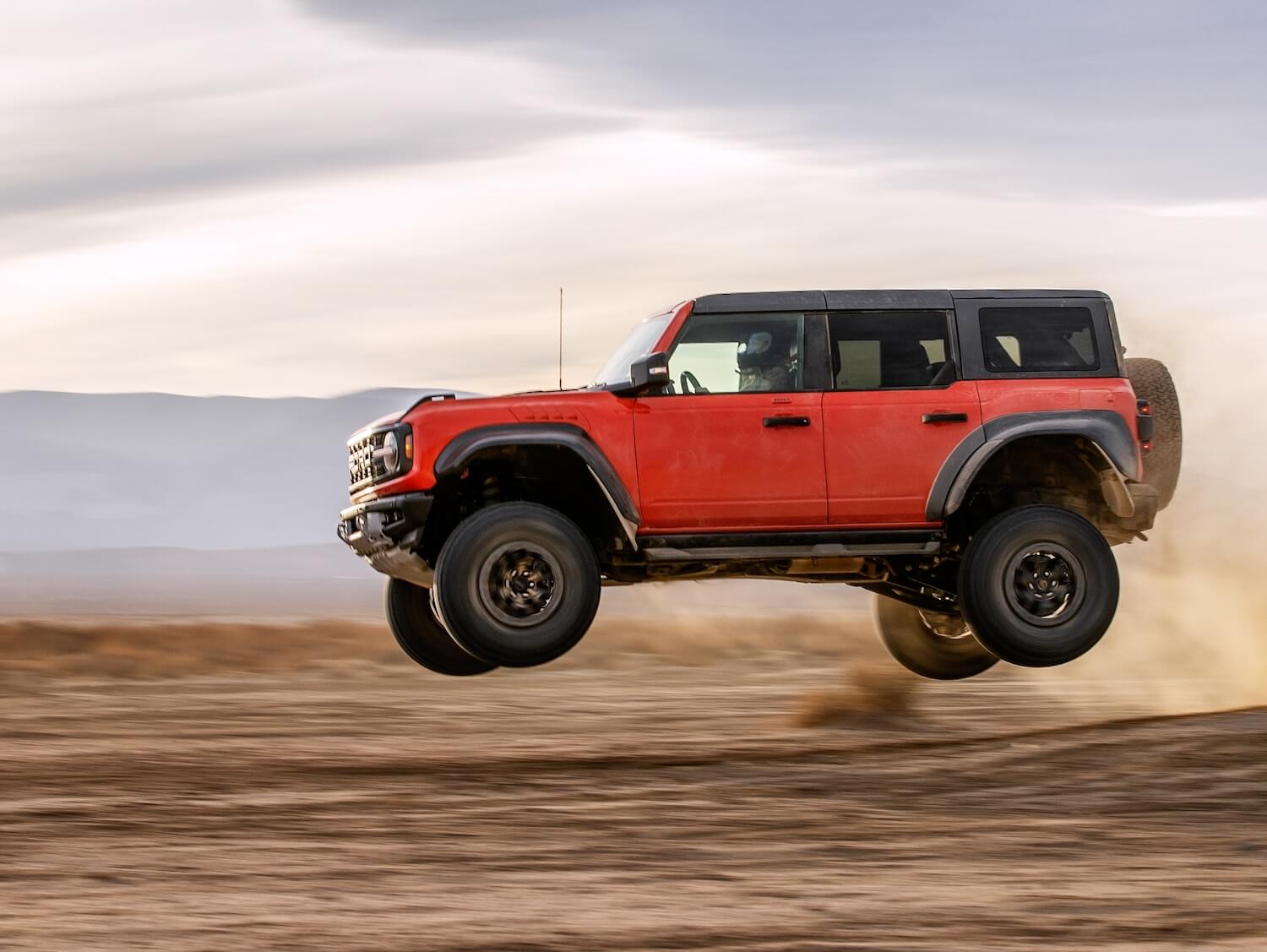
The internal bypass shocks at all four corners mean that there is no drama when the Bronco Raptor gets airborne. How does a bypass shock work? In addition to being velocity sensitive, a bypass shock is also position sensitive. This means they can be soft over small bumps without blowing through the travel on large hits and jumps.
Anonymous users online are clamoring for a V8 in the Bronco Raptor; we have heard the same thing when the Gen2 F-150 Raptor came out. While we agree that nothing matches the sound of a V8 engine, and both engines weigh the same at around 440 pounds when you consider the addition of the turbochargers on the EcoBoost, the packaging of a V8 in the engine bay of the Bronco make that option a challenge since it is based on the Ranger chassis, which has much narrower framerails than the F-150. Ford is offering a limited run of V8-powered Bronco DRs (Desert Racer), but in order to package the engine the DR uses a full tube chassis and the radiator is placed in the back. Neither of those are practical for a production vehicle, even one as wild as the Bronco Raptor.
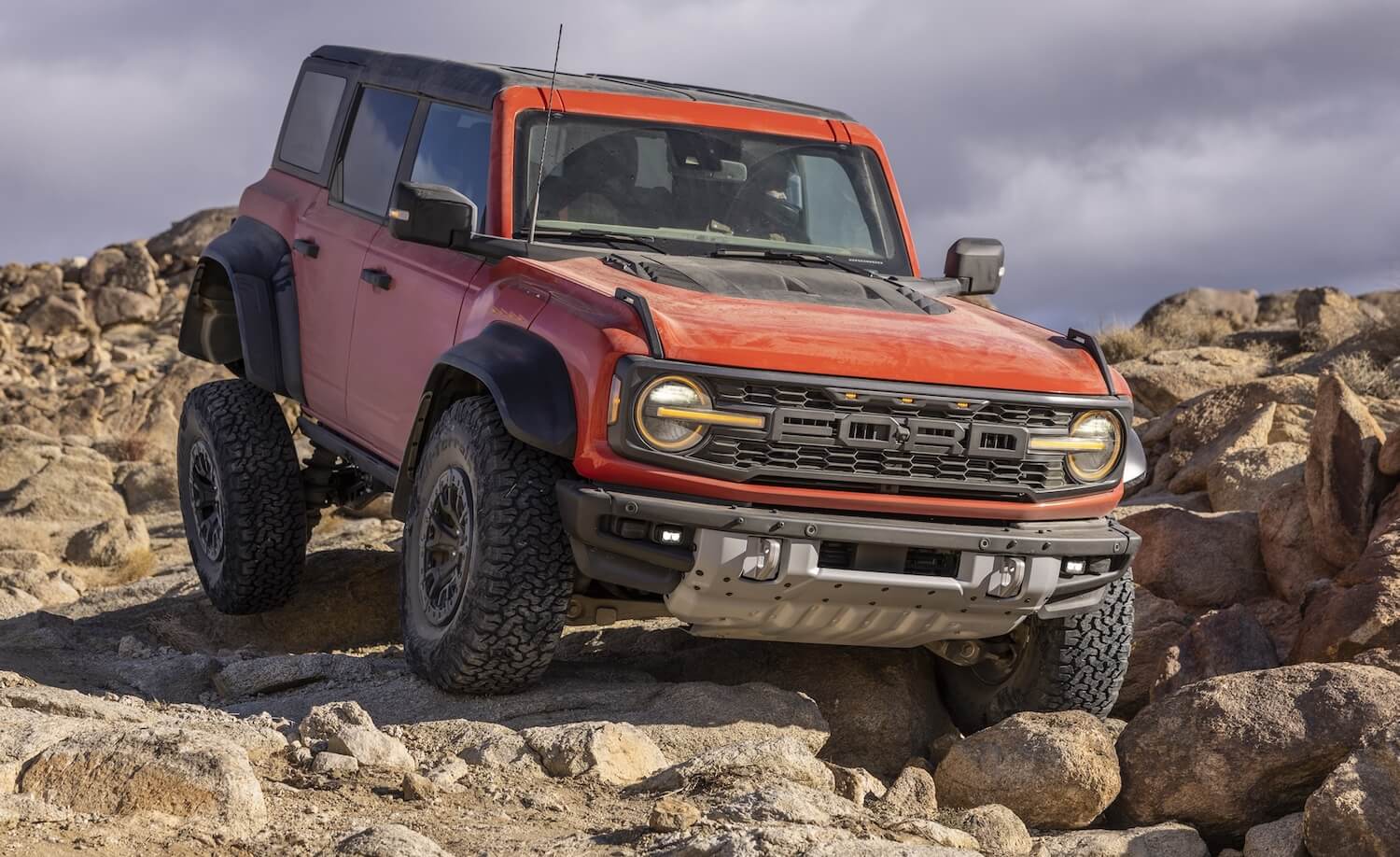
Ford reinforced the steering system, so in addition to thicker tie-rod ends, there’s a beefier power steering rack and housing modeled on the F-150 Raptor. It is too soon to tell if this rack will bolt up to other Broncos, but it is a potential upgrade for those looking to run larger tires.
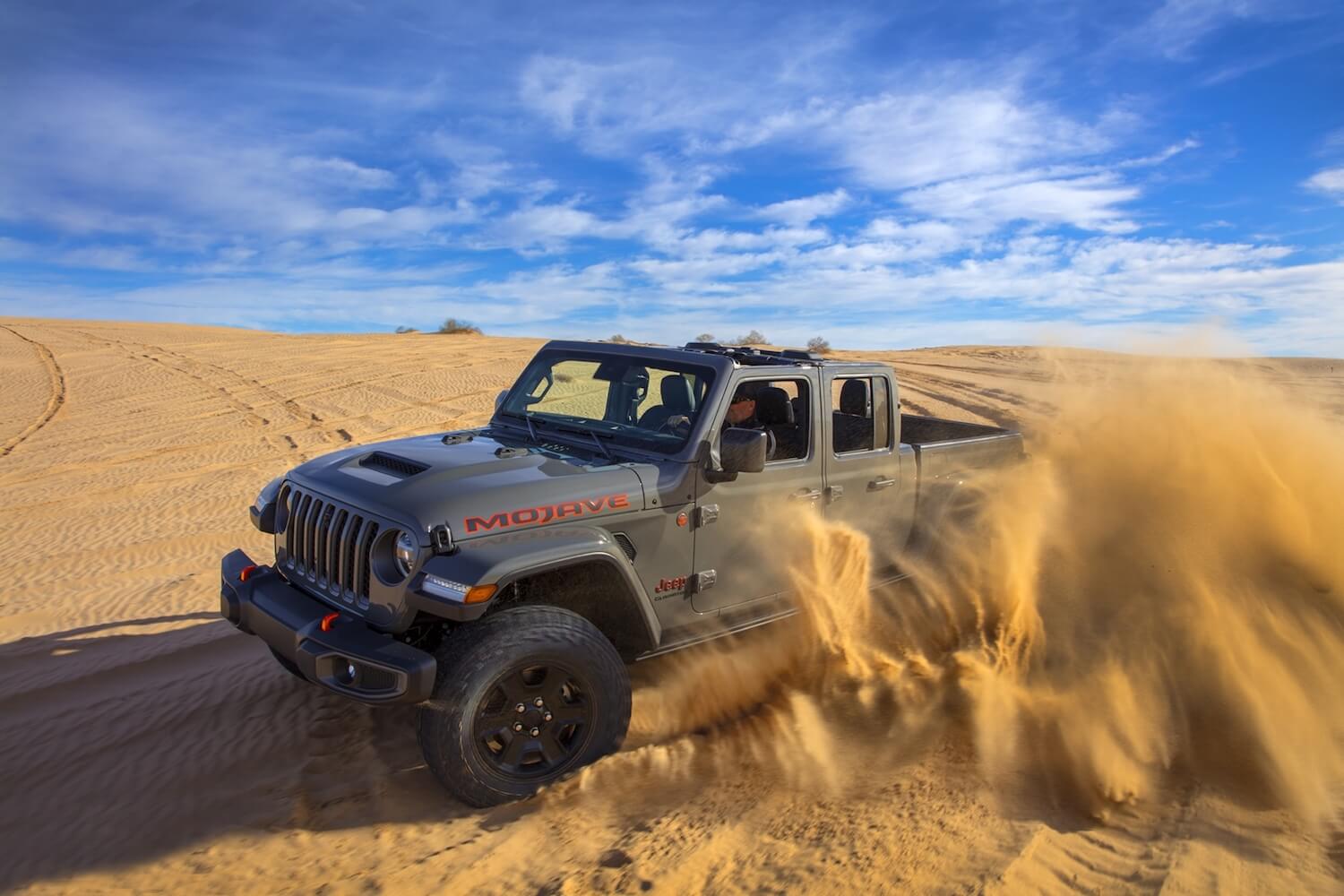
While it is a pickup and not an SUV, perhaps the closest rival to the Bronco Raptor is the Jeep Gladiator Mojave. Hear us out. The top comes off, it has internal bypass shocks, and the Mojave is the only production vehicle to come from the factory with hydraulic bump stops.
The Competition
When Ram introduced the TRX it was the first real competitor to the Raptor pickup, but what competition is out there for the Bronco Raptor? The vehicle we see it sized up with most often is the 392 Jeep Wrangler, but the two have little in common beyond being drool worthy. The Wrangler has more horsepower and a higher price tag, but with solid axles and Rubicon trim the 392 Wrangler is more of a hot rod rock crawler where the Bronco Raptor was designed for the desert. In fact, the Bronco Raptor is nearly a foot wider than the Wrangler! In the SUV market, there really isn’t much that even comes close to the new Bronco Raptor. The only other SUV that offers internal bypass shocks from the factory would be the Toyota 4Runner TRD Pro, and it is far cry from a Bronco Raptor with 270 horsepower, a five speed automatic, and 32-inch tall tires. Will we see other manufacturers stepping up to challenge the Ford Bronco Raptor in the future? We sure hope so!



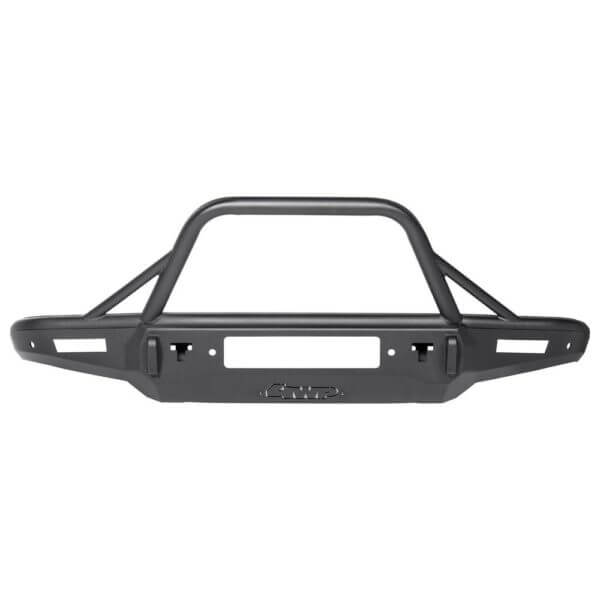


2